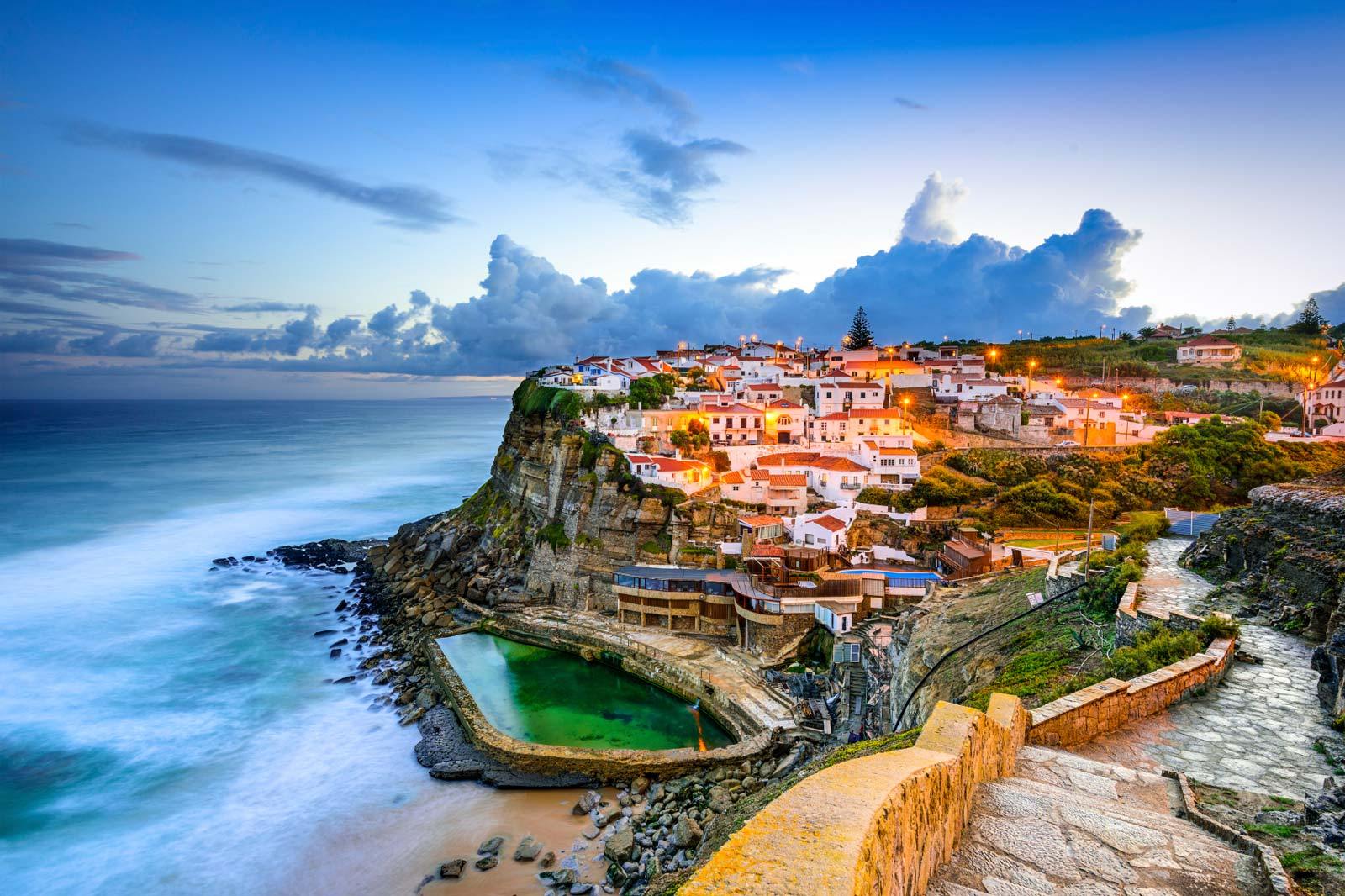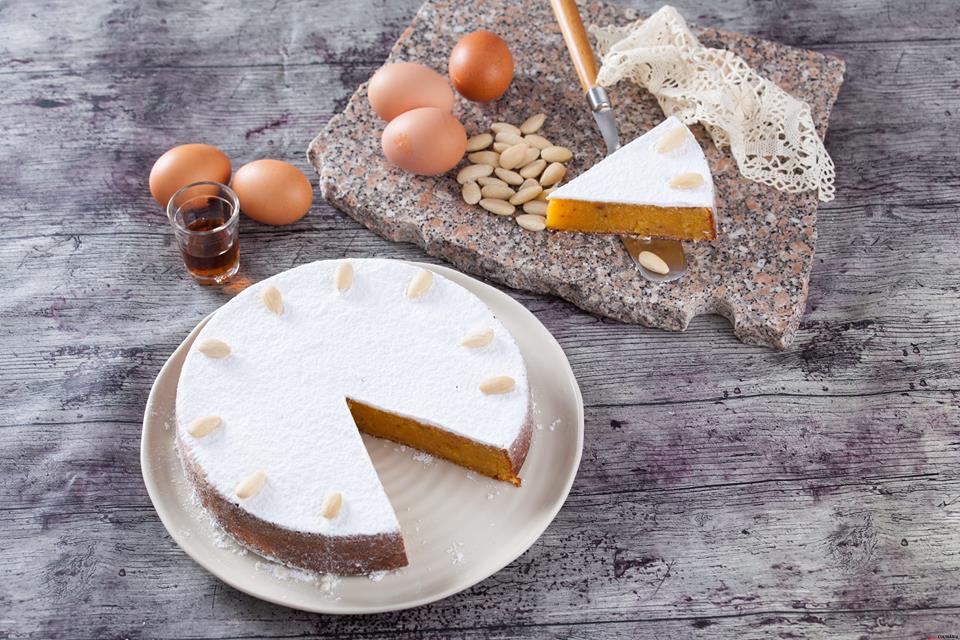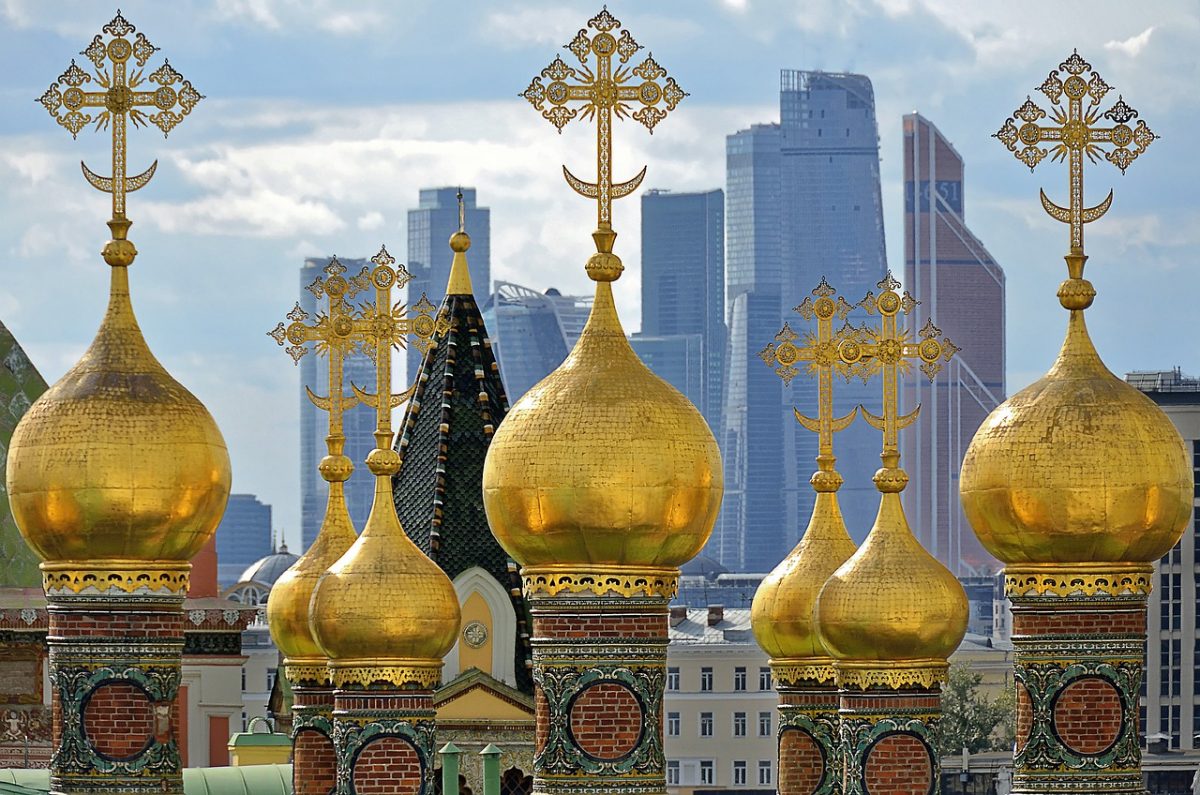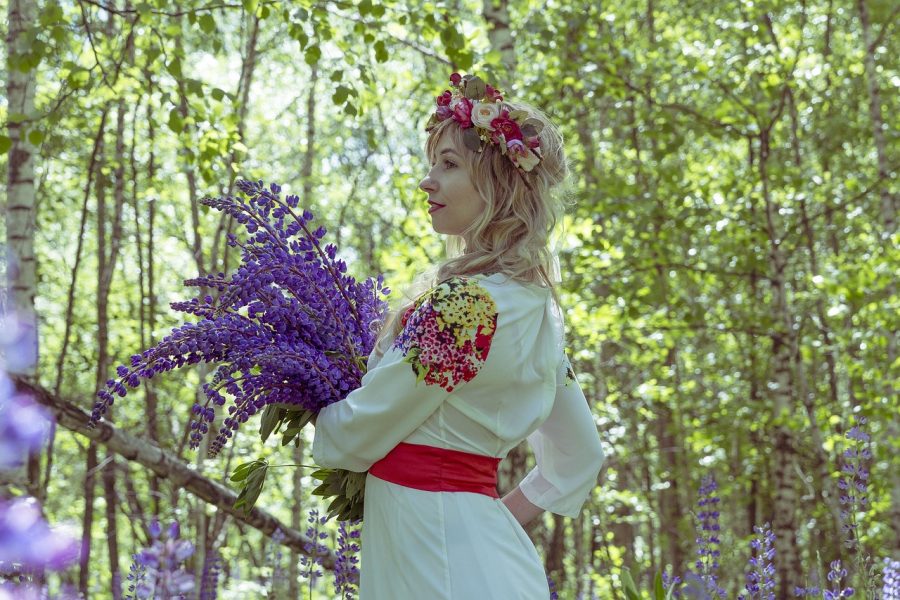Suppose you are tired of the hustle and bustle of a big city like Lisbon. In that case, if you want to spend one or more days in a quiet environment just a few minutes from the capital, we have a great selection of the best villages close to Lisbon to visit.
When compiling this list, we tried to consider several details, such as the distance to Lisbon (maximum 1 hour and 30 minutes by car) and the fact that these villages continue to maintain unique lifestyles and habits for a town close to Lisbon.
Typical, charming, charming… by the sea, in the mountains of Sintra, in the Saloia region, or the Alentejo. Come and discover ten villages to visit near Lisbon.
1. Penedo
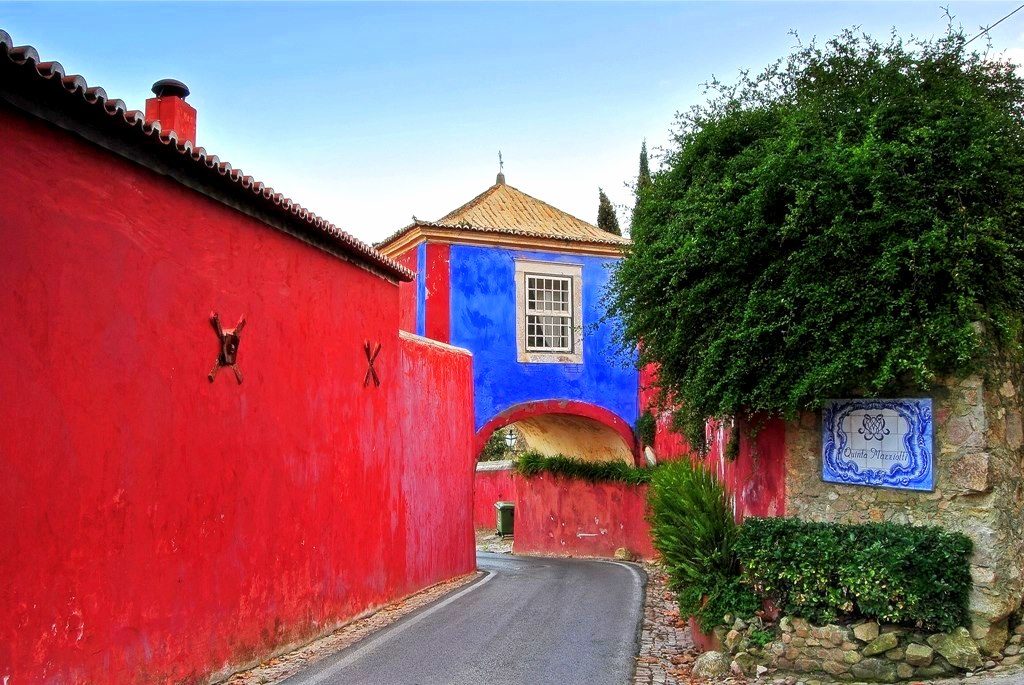
A typical village on the outskirts of Lisbon? Yes, it is possible. The village of Penedo, in the parish of Colares, is perhaps one of the best examples. Located on top of a hill, the town has existed since the 13th century.
To get here, you must go through narrow, winding streets. Although the vast majority of the houses were already built in a modern style, many still have an old design. The location, the steep and winding streets, alleys, and whitewashed houses give it a picturesque image of a typical village.
It is possible to spend an afternoon in Penedo discovering its little corners. And it is also possible to make this village the center to discover the surroundings. After all, we are in the heart of Serra de Sintra, so there is no shortage of reasons to spend a few days learning about the region.
2. Aldeia da Mata Pequena
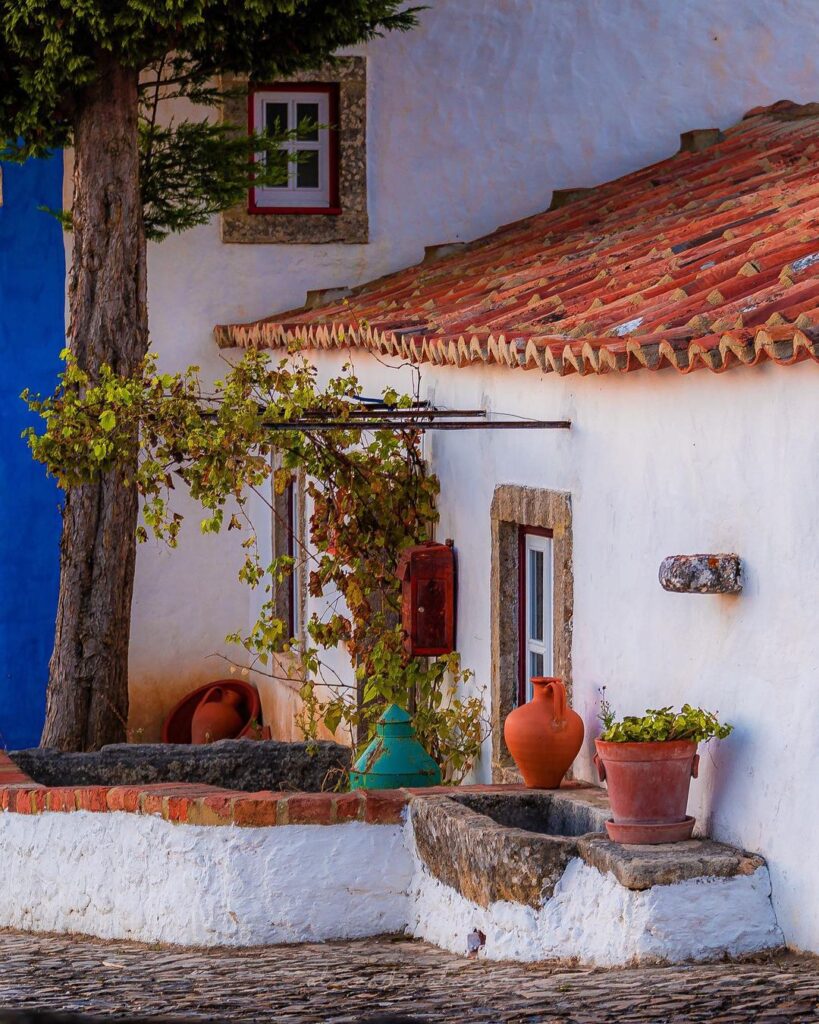
Very close to Lisbon, in the municipality of Mafra, is one of those villages that take us back in time. The village of Mata Pequena, with only ten houses, has whitewashed houses and cobbled streets with a charm that is difficult to find elsewhere.
It is a typical saloia village, inserted in the Penedo do Lexim Special Protection Zone. It was fully recovered and converted into rural tourism. The restoration work was carried out to preserve the village’s original layout as much as possible.
Spending a few days in Mata Pequena is like returning to the past and reliving yesteryear’s smells, experiences, and traditions. And if you want, you can make this your hub for exploring the surroundings. There is no shortage of places to visit very close to this location: Mafra and Ericeira are just some of the examples.
3. Aldeia típica José Franco
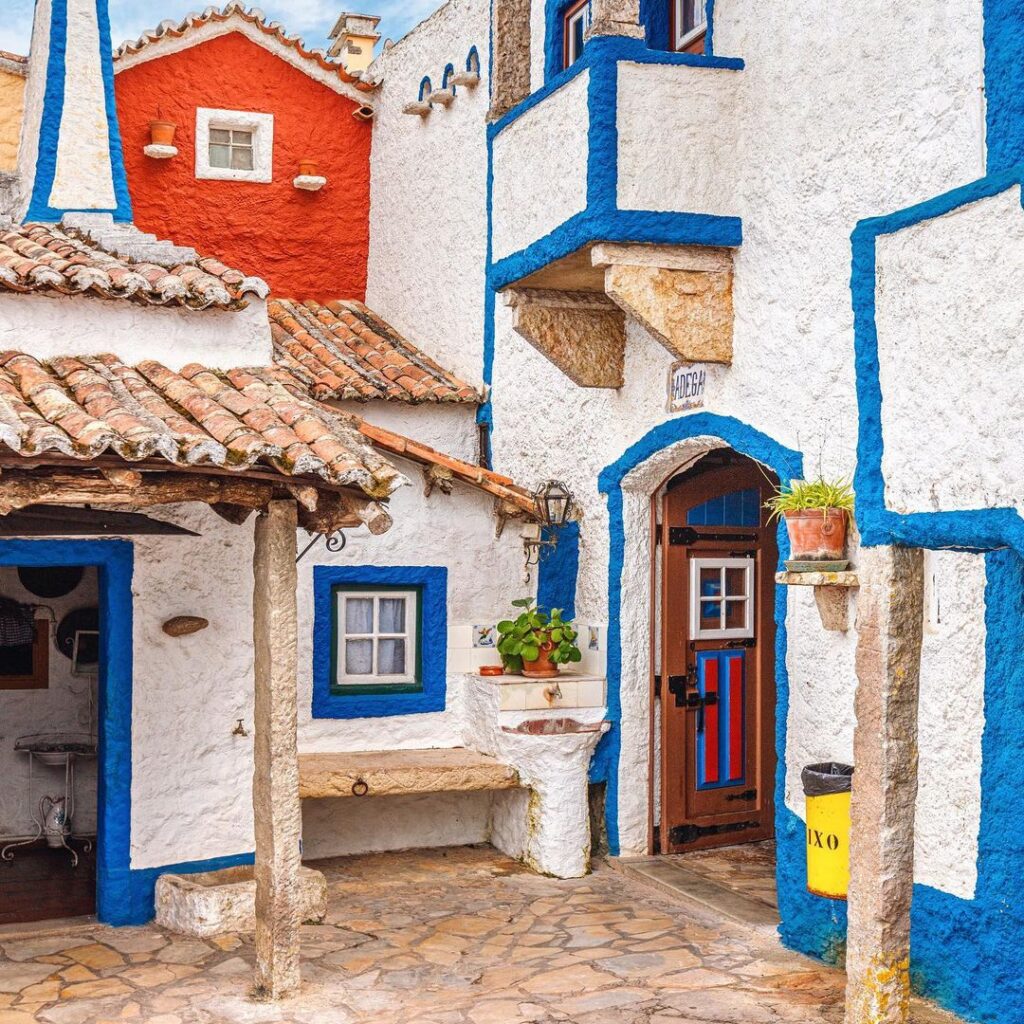
It’s not a village. But it is one of the best places you can visit near Lisbon, especially with children. In the typical José Franco village, you can discover the daily life of towns in the region of Saloia is like. All these thanks to the efforts of potter José Franco.
Since he was little, José Franco showed remarkable talent for the art of pottery. He learned from local masters and rehabilitated his grandfather’s pottery. Over time, he transformed the workshop into a unique place where everyone could see his work up close.
This small museum village is located in the small town of Sobreiro, between Ericeira and Mafra. Take your children with you. Let them marvel at the small clay figures that make up the place. After the visit, enjoy the local cuisine or refresh yourself on one of the many good beaches in Ericeira.
4. Azenhas do Mar
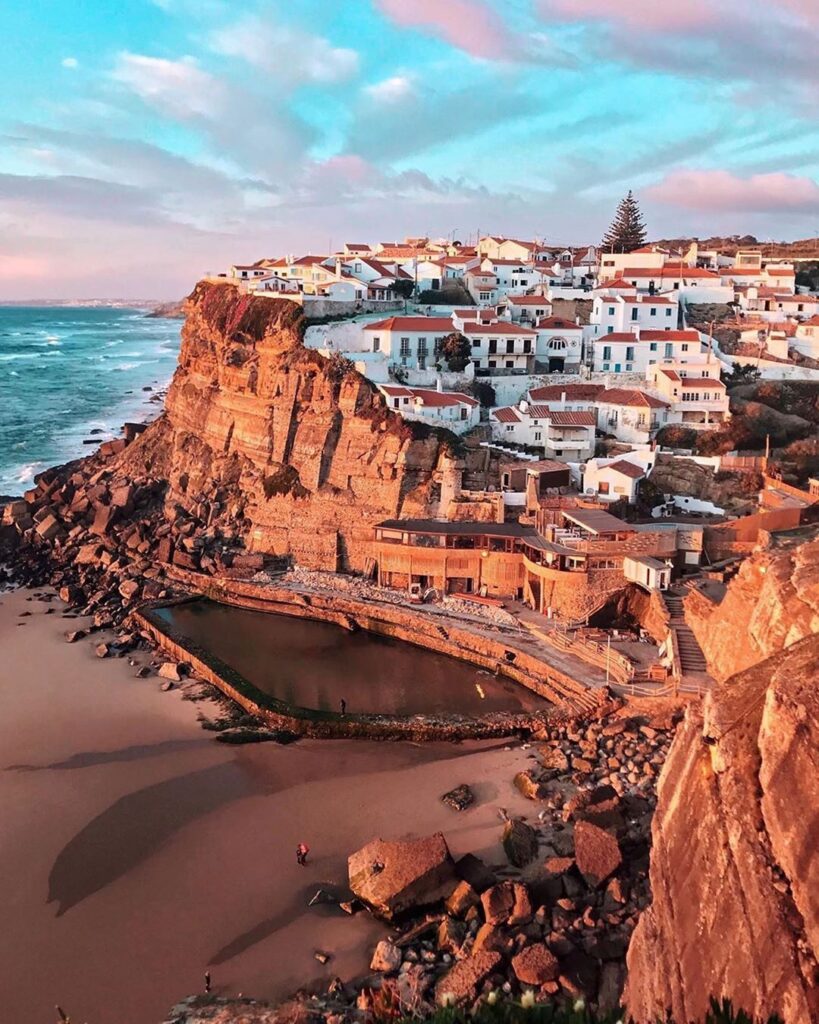
Located in Colares, Azenhas do Mar is a masterpiece of architecture. The inhabitants have been building their houses on this cliff by the sea for centuries. The result is a quirky little village with steep, narrow streets, so small that sometimes they are streets, but only stairs towards the sea.
It was a vacation spot for King D. Carlos and his wife, D. Amélia. Today it is a place of pilgrimage for those looking for one of the best places near Lisbon to be dazzled by the sunset.
In the southern part of the village, there is a viewpoint from where you can appreciate the whole complex. Below, already on the beach, is a small ocean pool. And the village is also famous for its restaurant, which serves some of the region’s most popular fish and seafood dishes. This is one of the most charismatic villages near Lisbon.
5. Santa Susana
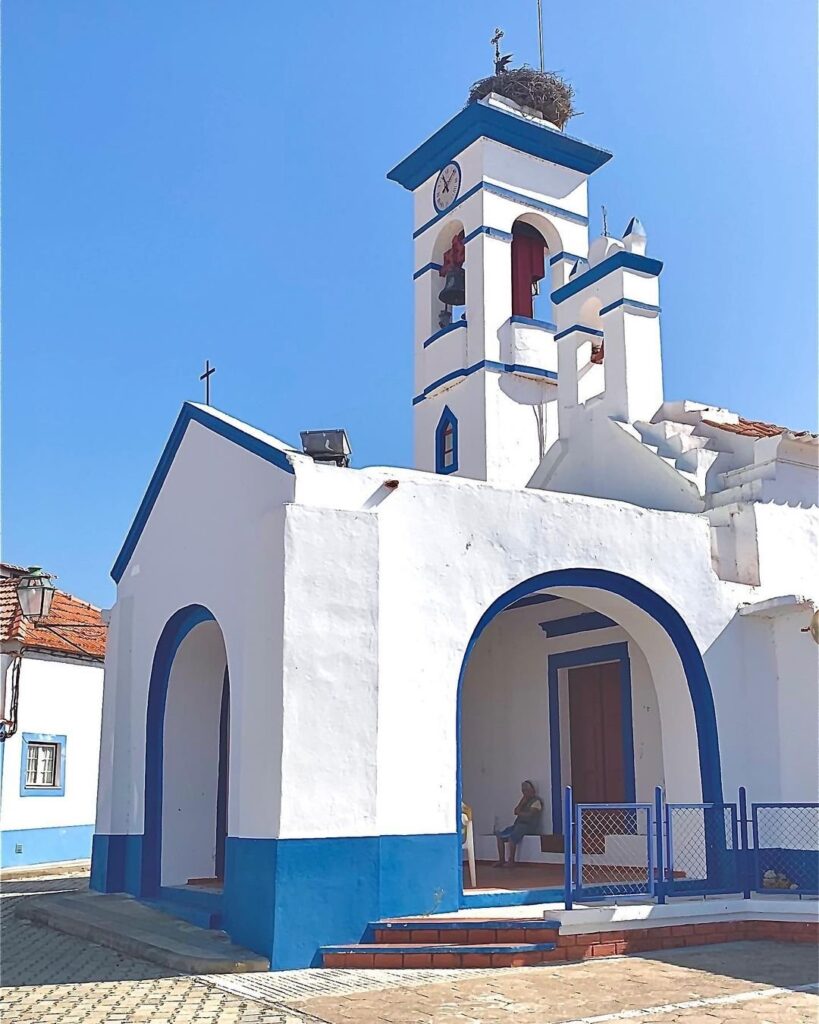
This is undoubtedly one of the most beautiful and typical villages in all of Alentejo. It is located in Alcácer do Sal, between 2 streams, and it is possible to get here from Lisbon in just over 1 hour.
The architecture is typically Alentejo: whitewashed houses with large chimneys and the famous blue bar. It is even said that the habit of painting the foot of homes blue, so common in Alentejo, was born here. Truth or just legend, the truth is that this color is known as “Santa Susana blue”.
The village is not old. It was built in the last century to provide shelter for agricultural workers in the region, who ended up staying here permanently. If you visit Santa Susana, spend some time wandering its streets and alleys, taste the local gastronomy and appreciate the handicrafts made of willow wood and cork.
6. São Cristóvão
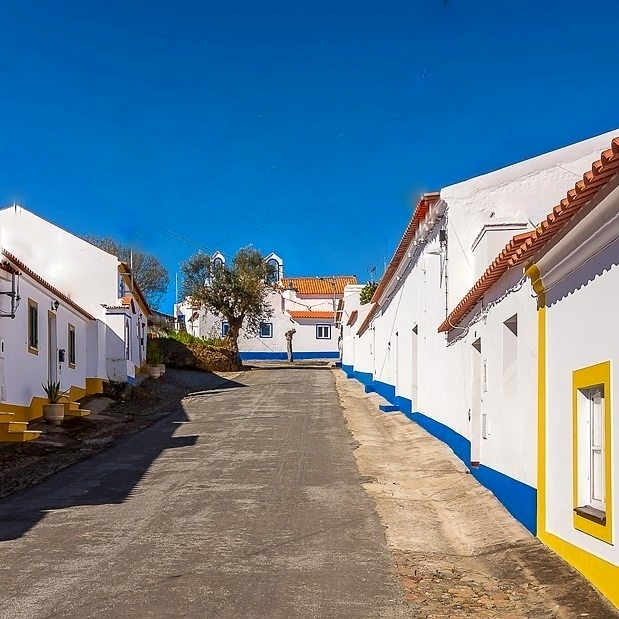
This parish, in the municipality of Montemor-o-Novo, is a mandatory stop for its architecture and rich history. First, try to visit the Church of São Cristóvão, where you can admire a 16th-century sculpture of the patron saint. Then, continue the visit to the so-called “Calcanhar do Mundo”, a narrow and impressive boulder on the S. Cristóvão stream.
A visit to the megalithic ensemble of Tojal is also recommended, where you can see a cromlech and 17 menhirs, thus attesting to the ancient human presence in this beautiful village that still welcomes us with open arms, ready to share its history with us.
7. Pia do Urso
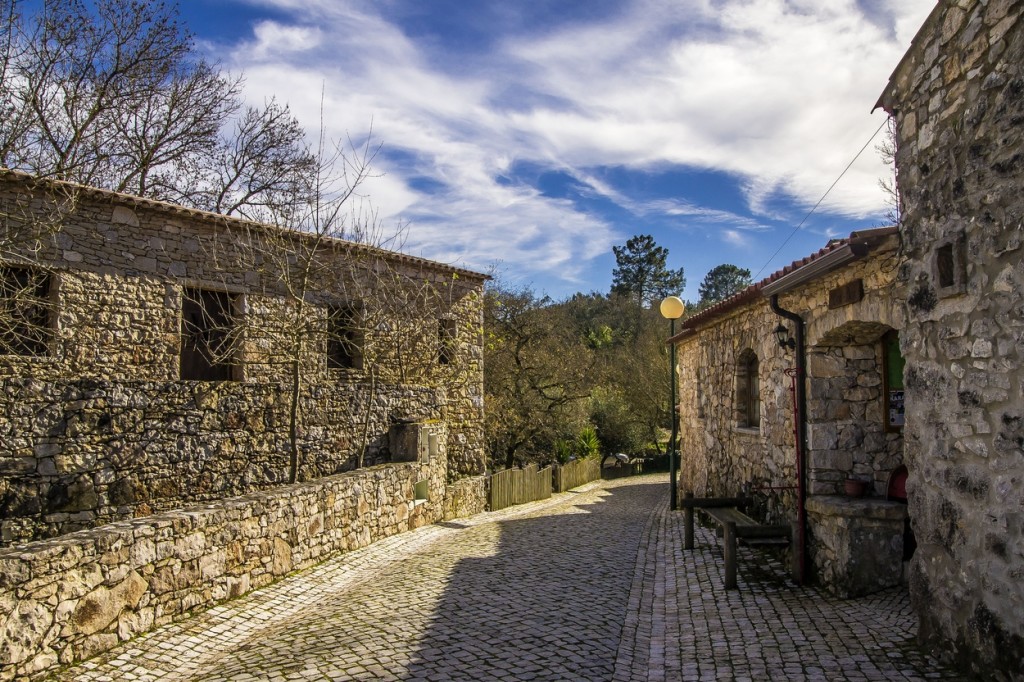
In the municipality of Batalha, the village of Pia do Urso is much more than a village. All of it is a sensory eco-park intended for the blind. But the visit is not justified just because of the eco-park.
The village has recovered, and it is pleasant to explore its corners by walking through its streets. The attractive landscape and the surrounding calm provide the rest of the charm. You can spend just an afternoon or a few days here, as some of the houses have been recovered and transformed into rural tourism spaces.
You can even make Pia do Urso the center to explore the surroundings, such as the number of places in this region that are worth a visit: Batalha, Ourém, Tomar, Nazaré, São Martinho do Porto… the hard part is choosing.
8. Gouveia
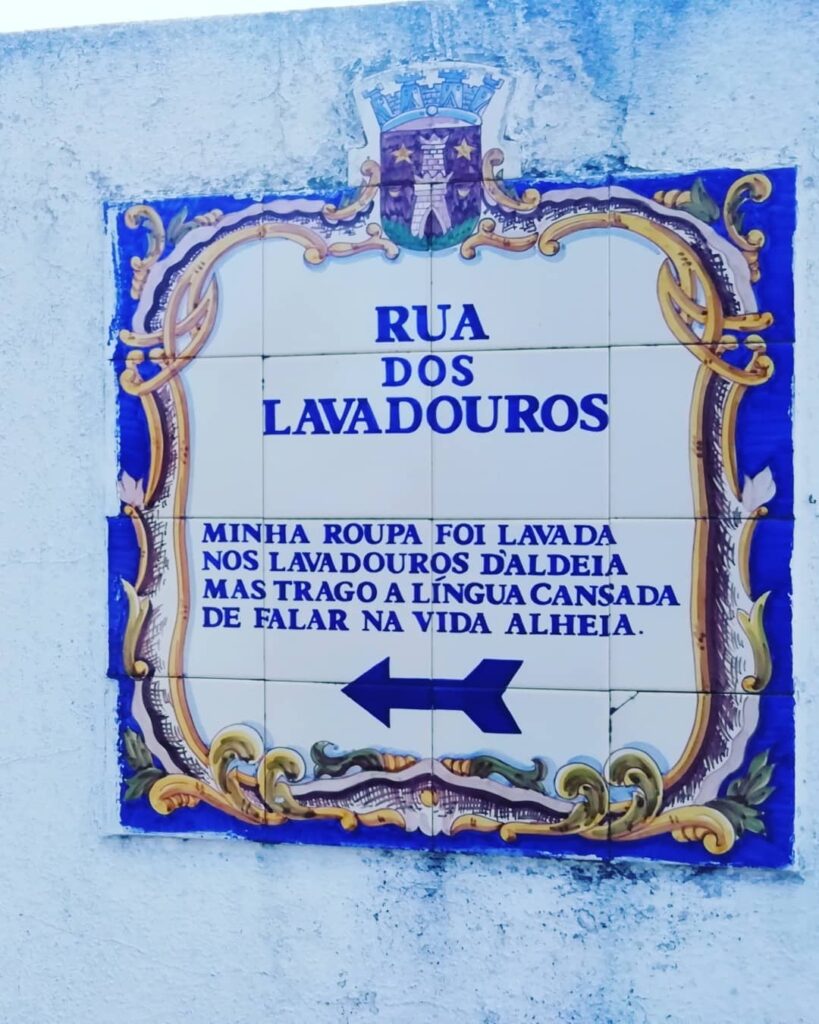
It is known as the “village in verse” and is located in the parish of São João das Lampas, in Sintra. There are decorative plaques and verses written by a famous poet born in the land all over the small Gouveia. It is one of the most peculiar villages near Lisbon.
In the 80s of the last century, José Valentim Lourenço decided to show all his love for his land in the form of verses immortalized in tile panels. Located in the various parts of the village, they tell a little about the place in question: the well, the lanes, the streets, and the square.
Spending an afternoon walking around the village and discovering these reverse-side signs is a great way to spend an afternoon with the kids. The best of everything? You can do it before or after going to the very close beaches, such as Praia das Maçãs, for example.
9. Aldeia Galega da Merceana
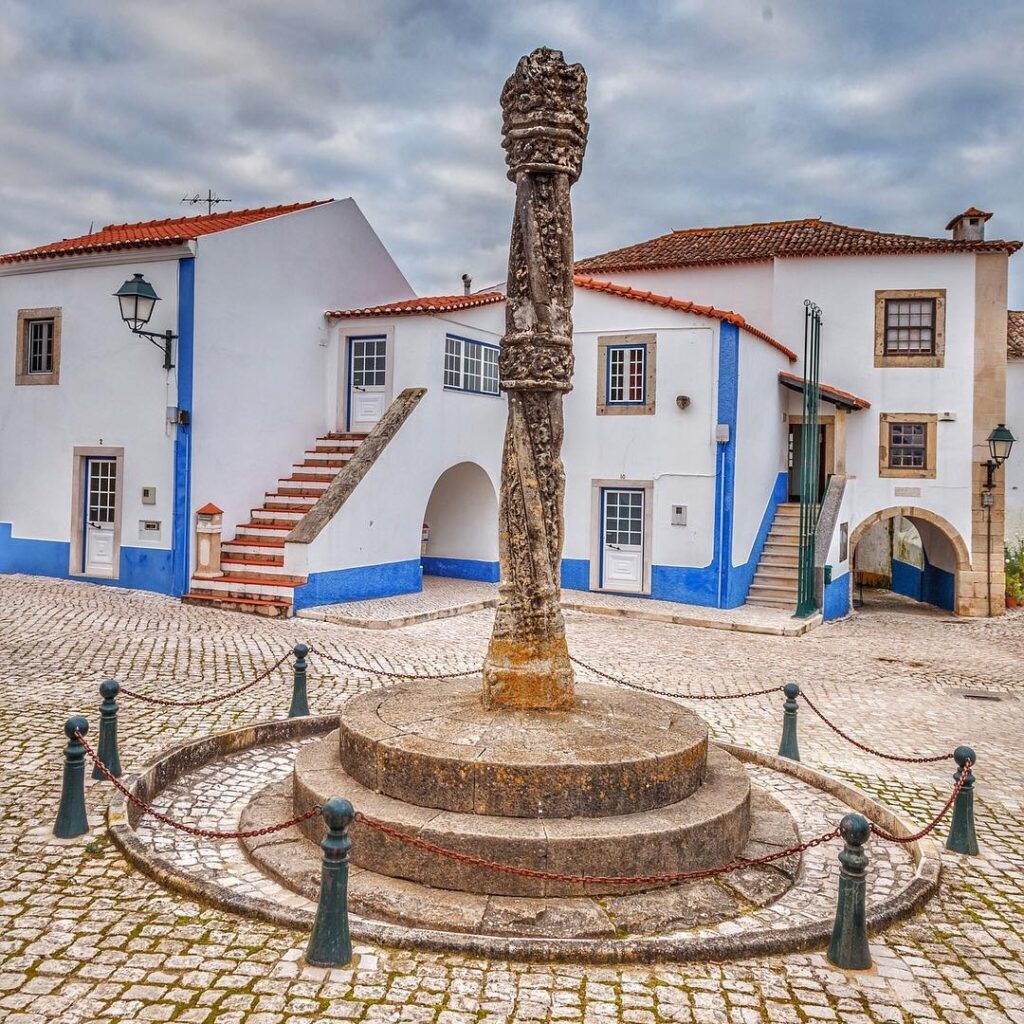
This typical village is a forgotten corner, even by the neighbors. To get here, you must travel through the rural and undulating fields of the saloia area. A region where vineyards and orchards, hermitages, and chapels abound. And, of course, the villages on the small hills. This is the case of Aldeia Galega da Merceana.
Its architecture is typical of saloia villages: white houses and tiny, disordered, and winding alleys. But the town shows details that indicate that it had a slightly more important and glorious past.
Its pillory is in Manueline style. It has 2 squares: Praça do Pelourinho and Praça do Divino Espírito Santo. We can still find the Casa da Rainha, today the seat of the Parish Council, where it is said that Queen Leonor spent the night on her travels between Lisbon and Caldas da Rainha.
10. Salinas da Fonte da Bica
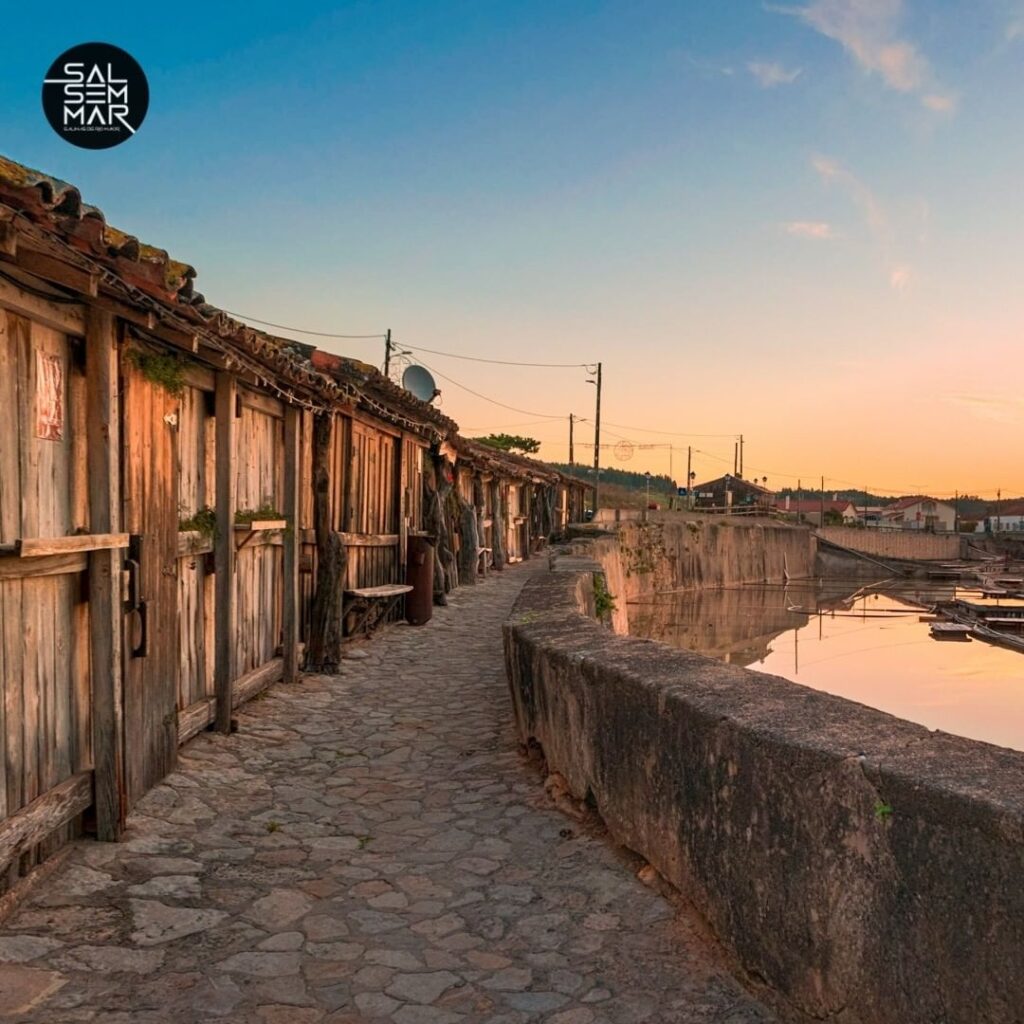
They are the largest salt pans in the interior of the Iberian Peninsula. Its exploitation began hundreds of years ago. Around it, a village was born to shelter the workers and their families and store the salt.
Romans, Arabs, and Templars passed through here. Walking through this small village is an authentic journey into the past. The houses were built in wood and are the best preserved in Portugal.
Everything here is made of wood. The reason? Wood is more resistant to natural wear and tear caused by salt. The houses are made of wood, the side supports are made of olive… and even the keys and locks are made of wood. The Fonte da Bica salt pans are, without a doubt, a unique place in Portugal.
